Our first sight of Corsica from the plane as it flies down the west coast of the island to Figari airport. Later we identified the jagged peaks on the horizon as the Aiguilles de Bavella, seven granite needles of the Alta Rocca region in southern Corsica.
We were fortunate to have an easy landing. Earlier flights had been disrupted by wildfire smoke. These trees were some of the first we saw. Corsica was in the grip of a full-blown heatwave.
But stopping in Pianottoli-Caldarello for supplies we found confirmation we’d arrived in Paradise.
At Roccapina we saw the Rocher du Lion and its man-made crown of stones.
In Propriano we visited the marina.
Sheltered at the back of the Gulf of Valinco, Propriano is the age-old port of the Sartenais. Sampiero Corso and his handful of men landed here in 1564 on his doomed mission to liberate Corsica from the Genoese, but over the next few centuries it was attacked so often by pirates that hardly a house was standing when the French took over, and for long after. Slowly rebuilt in the 19th century, Propriano has grown into one of the largest towns on the island (in Corsican terms this means over 3,000 year-round residents), in large part thanks to the wheelings and dealings of a nationalist and criminal triumvirate comprising former mayor, Emile Mocchi, son of an Italian immigrant (convicted in 2000 and 2005 on counts of extortion); his nephew, leader of one of the nationalist groups; and Jean-Jérôme (‘Jean-Jé’) Colonna, former link in the ‘French Connection’ and one of the island’s most notorious ‘godfathers’. As a resort, Propriano seems a bit brash beside Corsica’s age old seaside towns, but it has all the necessaries: sandy beaches (the Lido, 1km away, is the closest and best, and has life guards in the summer; Baracci beach to the north is scrappier and subject to strong winds and undercurrents) and around the gulf, a busy marina, boat and diving excursions and a row of seafood restaurants.
Corsica: Dana Facaros & Michael Paul, 2008
Propriano – Timber and Lighthouse: John Minton, 1948
The town itself is divided into two; the handful of shops round the main street, neglected and stained that are tilted on the hillside, and the port facade that turns down in a “T” along the shore to the left, while the road to Olmeto and Ajaccio breaks back into the mountains.
The coast is lined with strips of very white sand which because of the bathing bring in a few tourists in the summer, and at the extreme point a white lighthouse rises above the rocks in an assertion of purity. The same mauve tents of hills shut in the bay with overbearing closeness – huge faces so close their breath burns over the festering little port at their feet, breaking its will and hammering in its insignificance.
A haphazard concession to tourists is a shack by the rocks marked “LIDO” with grey wooden tables round the edge, overlooking the water and a gramophone in the bar playing continuously, rumbas and tangos, that float out over the sand hills where German prisoners work on laying fresh lines to the timber sheds.
Timber and fishing provide the town’s livelihood, where life has not been contaminated by neglect and the corruption of tourists.
Time Was Away – A Journey Through Corsica: Alan Ross, 1948
We climbed the steepest, narrowest road, winding its way uphill for a mile or so. There were times it was so precipitous that it seemed our car might roll over backwards. We prayed not to meet another coming the other way and we heaved a huge sigh of relief when finally we arrived at the top.
The clocks were stopped and welcomed us with smiling faces.
Time was away and somewhere else.
The waiter did not come, the clock
Forgot them, and the radio waltz
Came out like water from a rock:
Time was away and somewhere else.
Meeting Point: Louis MacNeice
Our terrace looked out over the town below.
La Méridionale – the ferry from Marseille.
We watched as little white planes took off from the Aérodrome de Tavaria on the far bank of the Rizzanèse and spiralled up into the sky over Laurosu Beach to drop their loads of parachutes.
A red kite watched over us in the pool.
We were on a rocky outcrop of boulders tied together by the snaking branches of tenacious trees.
We heard a rustling in the myrtle bush and discovered a wild tortoise.
In the evening we waited for a Rothko sunset.
And the rustling in the shrubbery became a snuffling and a grunting and a squealing.
And at dusk wild pigs appeared in the garden, cochons sauvages, otherwise known as sangliers.
They kept their eyes on us just as we watched them.
There were little humbug-striped piglets escorted by older matriarchs.
An ancient prehistoric tableau was enacted before us, like a familiar scene from a cave painting,
as they playfully chased each other around in circles in an ever-increasing cloud of dust.
Next morning I went down to where they’d been dancing and
I found their trotter-prints in the ashes of a garden bonfire.
※
A few days later down in the town we looked up to find we could see our house on the top of the hill.
And all the woods below full of wild pigs as numerous as the trees.
All down the hillside and on every hillside in every valley all across the island.





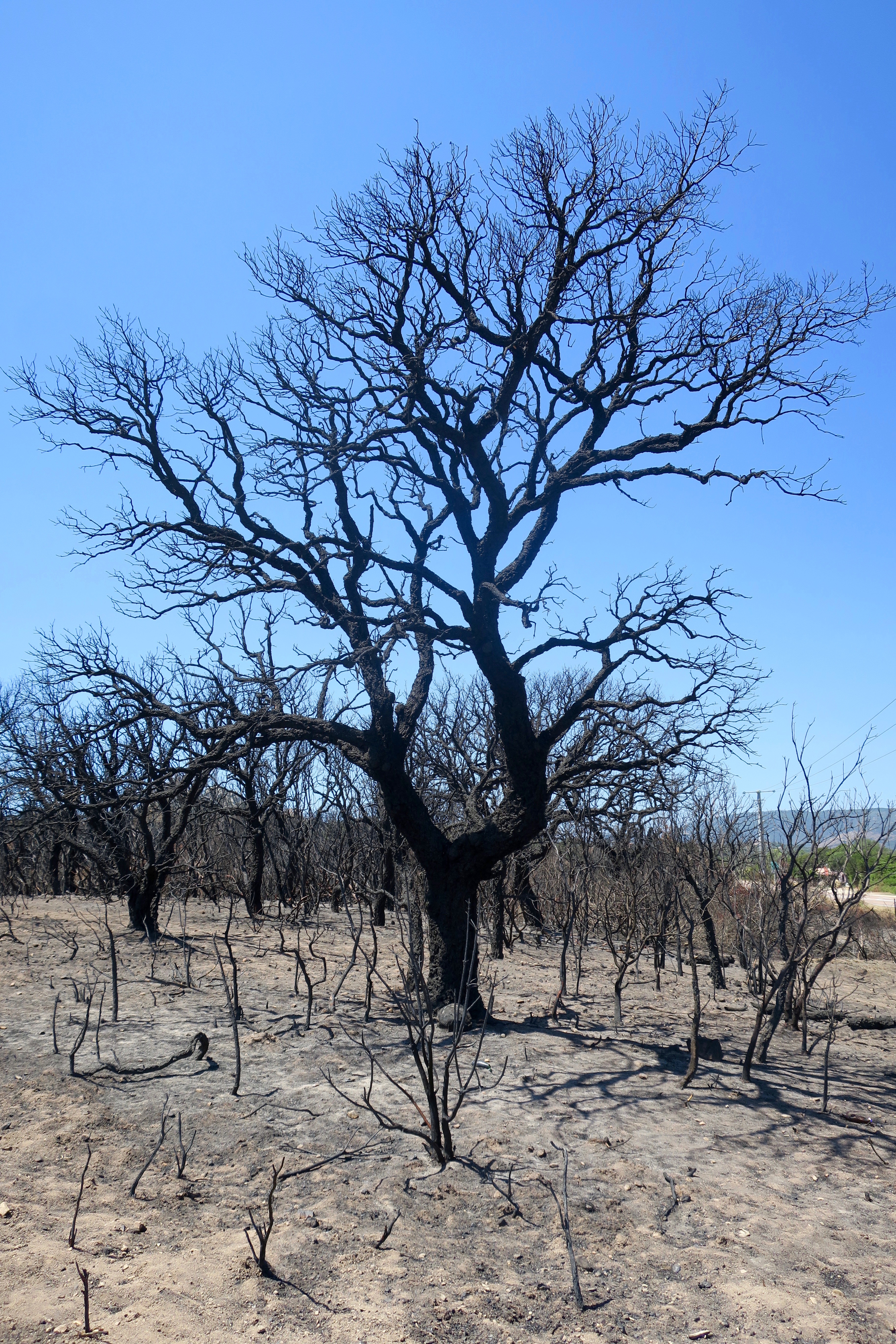


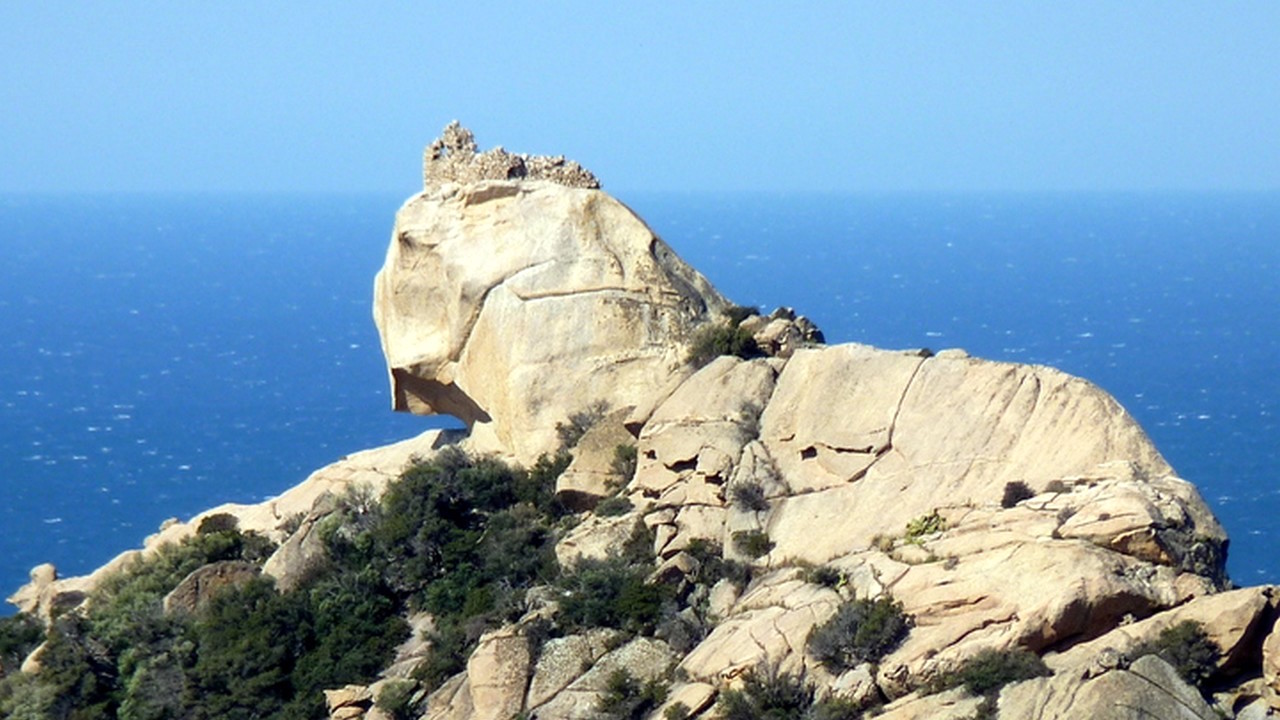
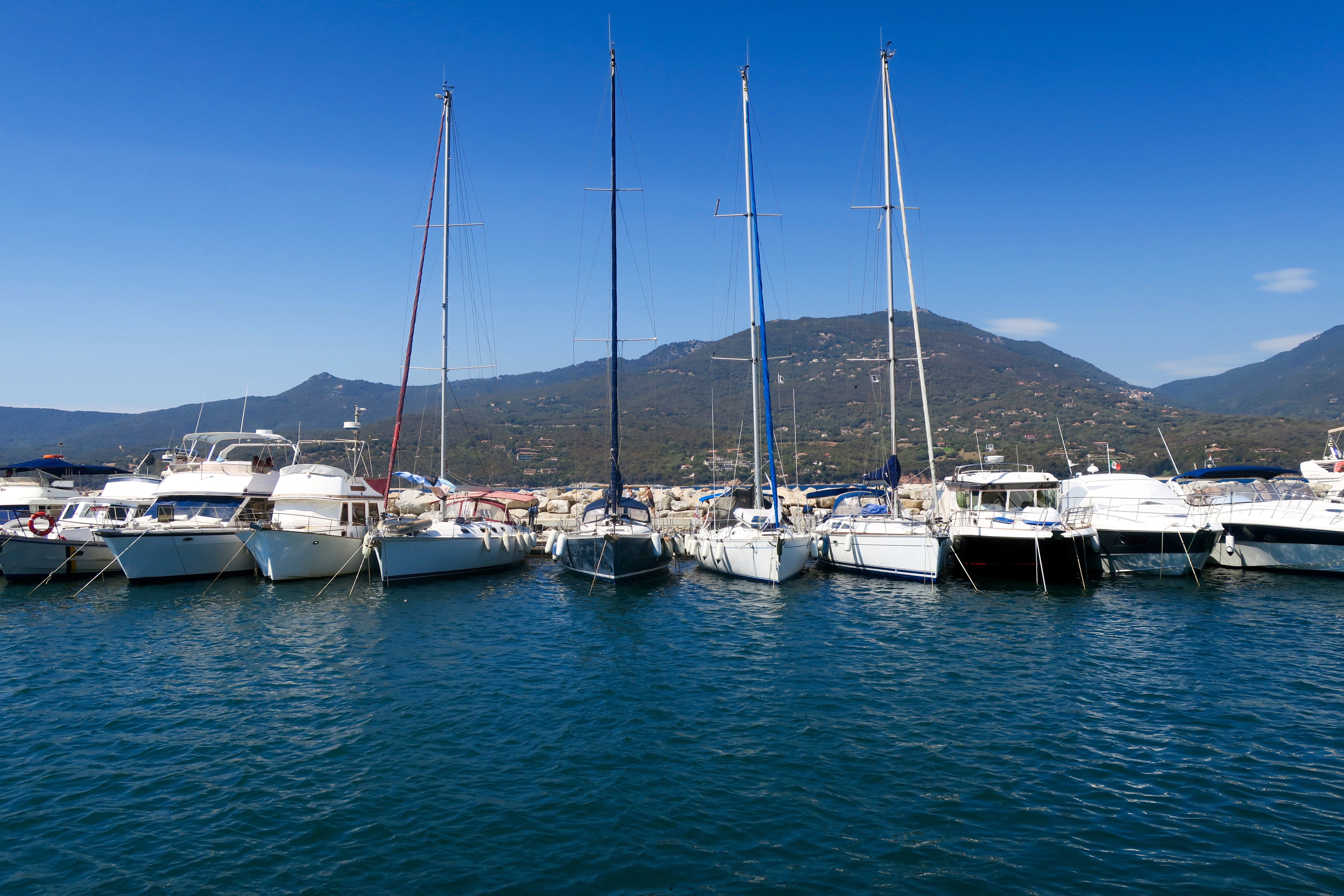


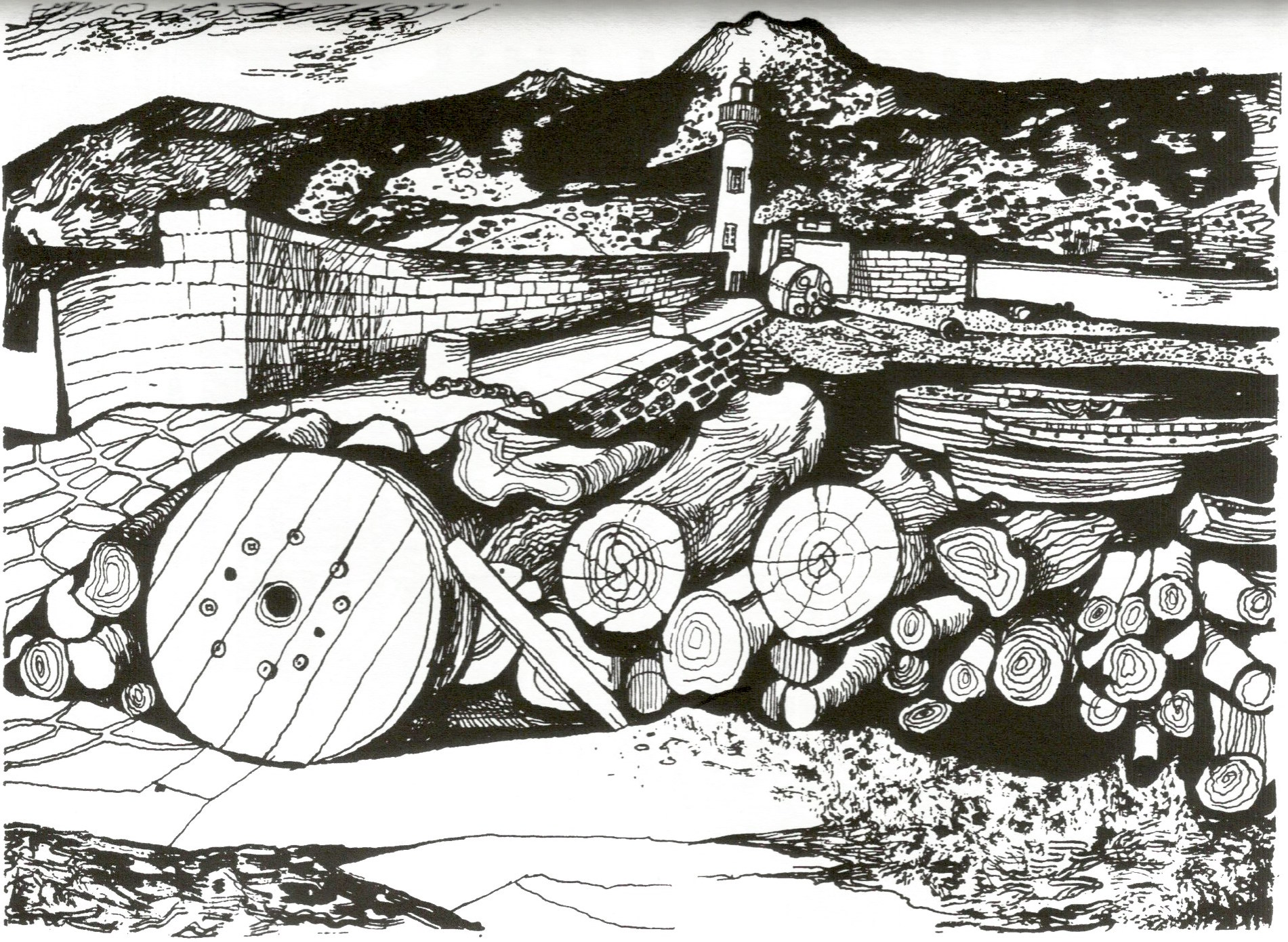
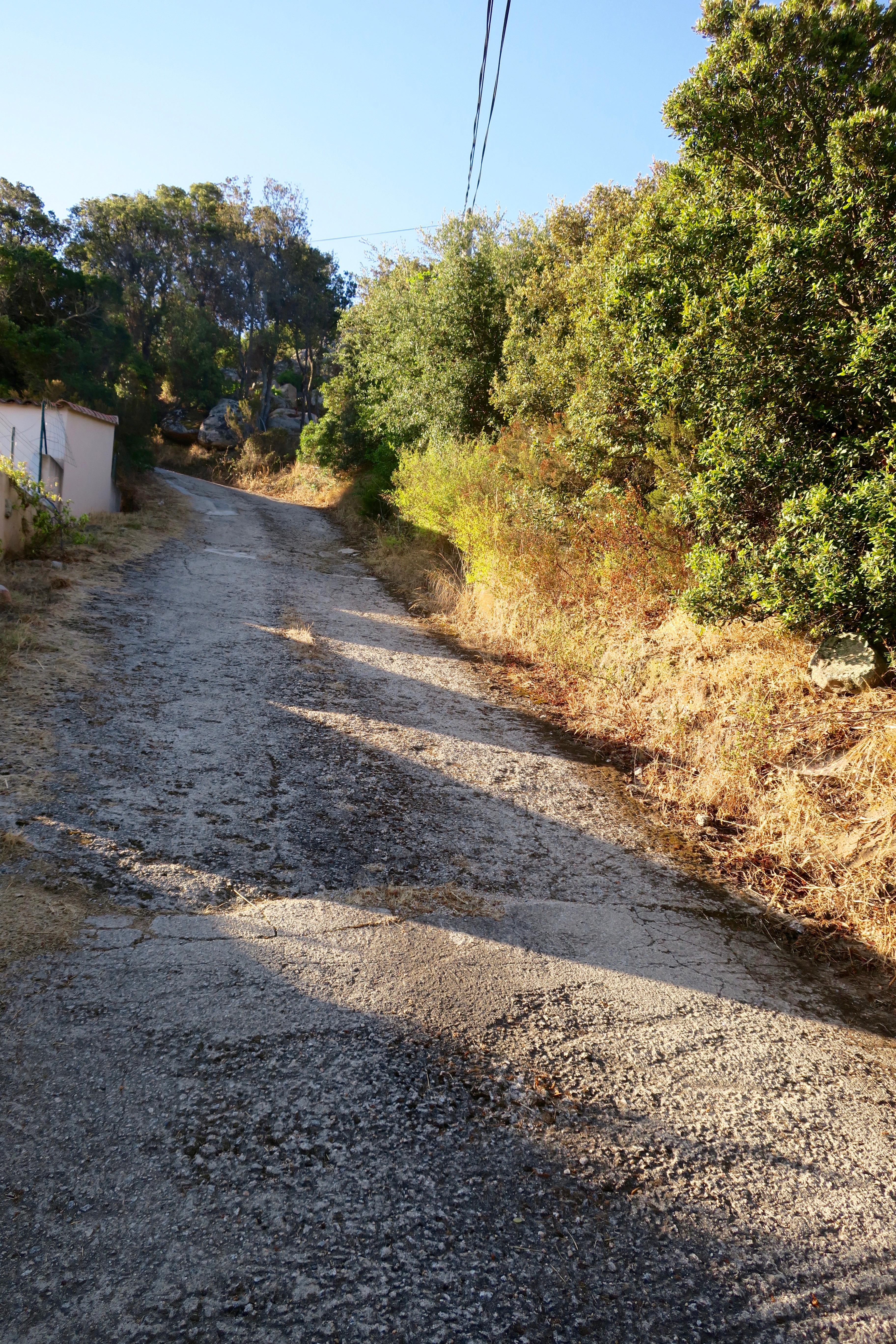
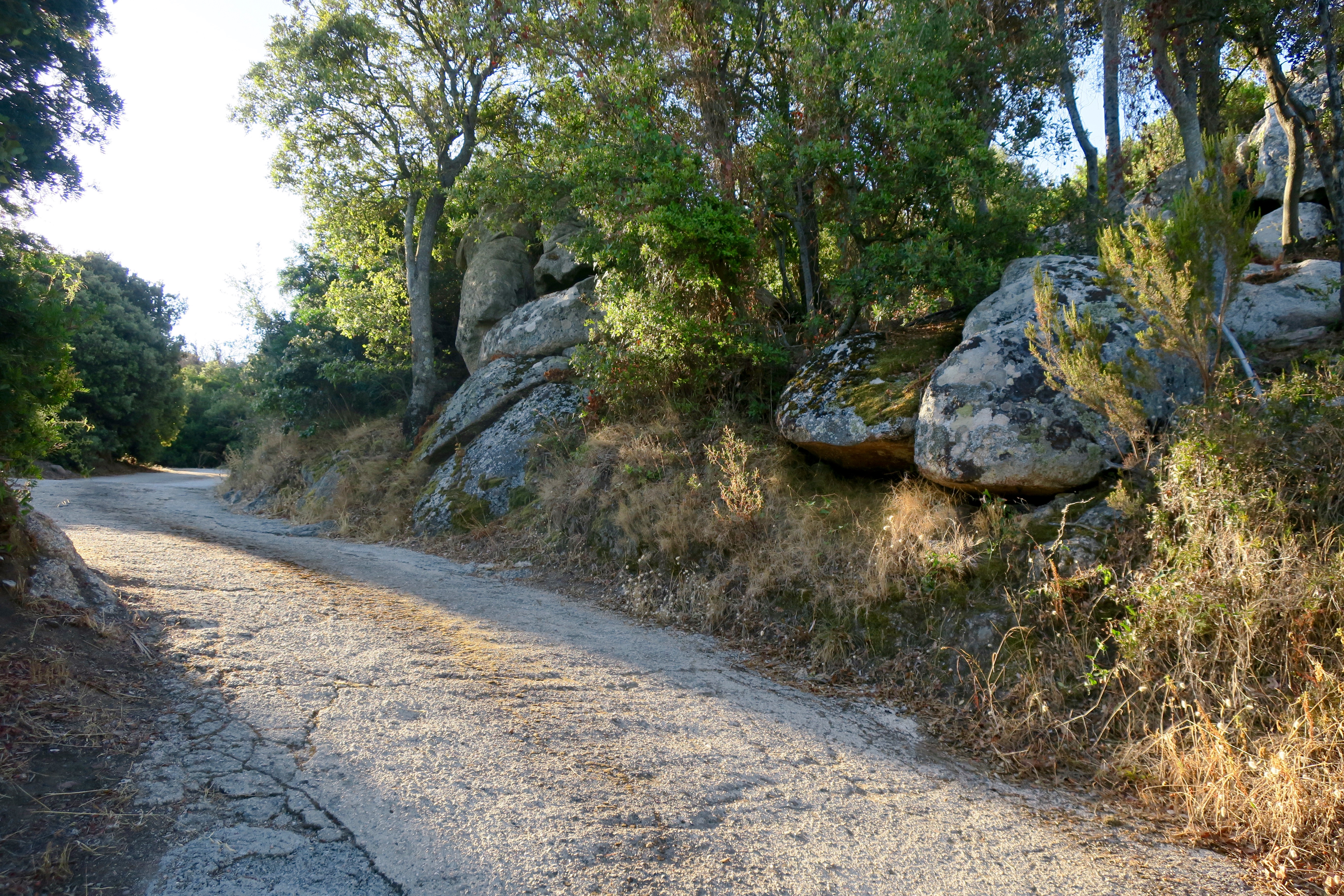
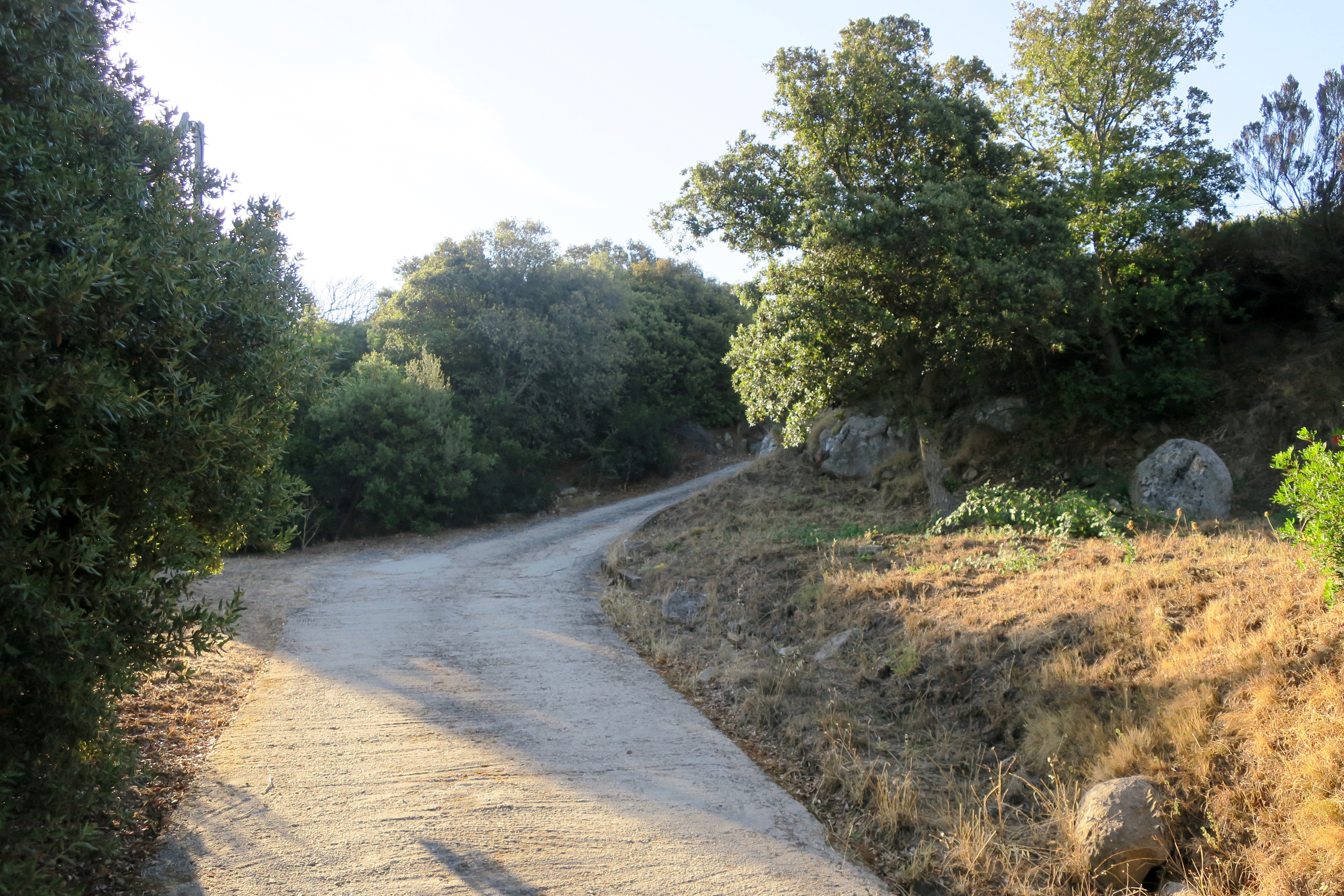
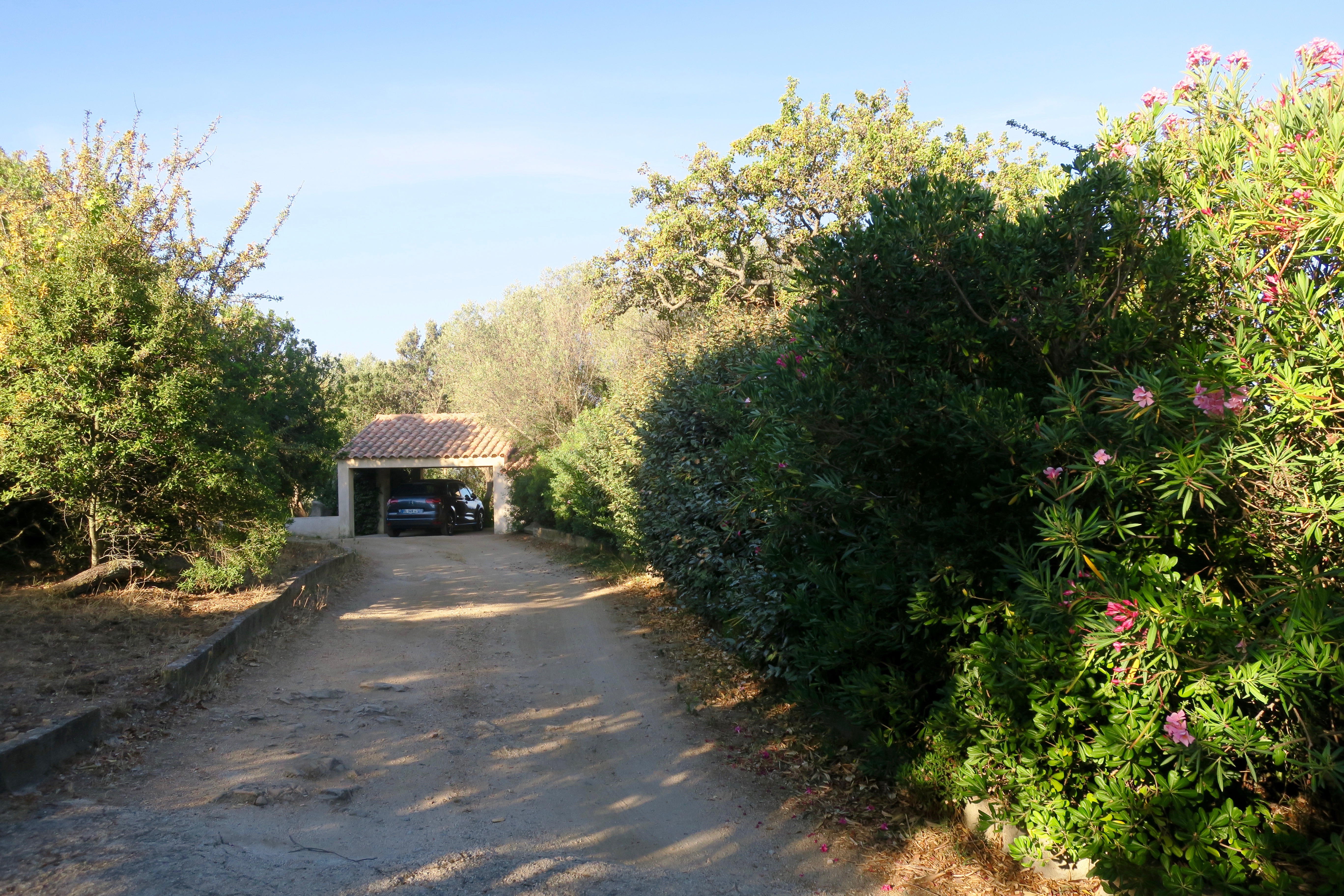





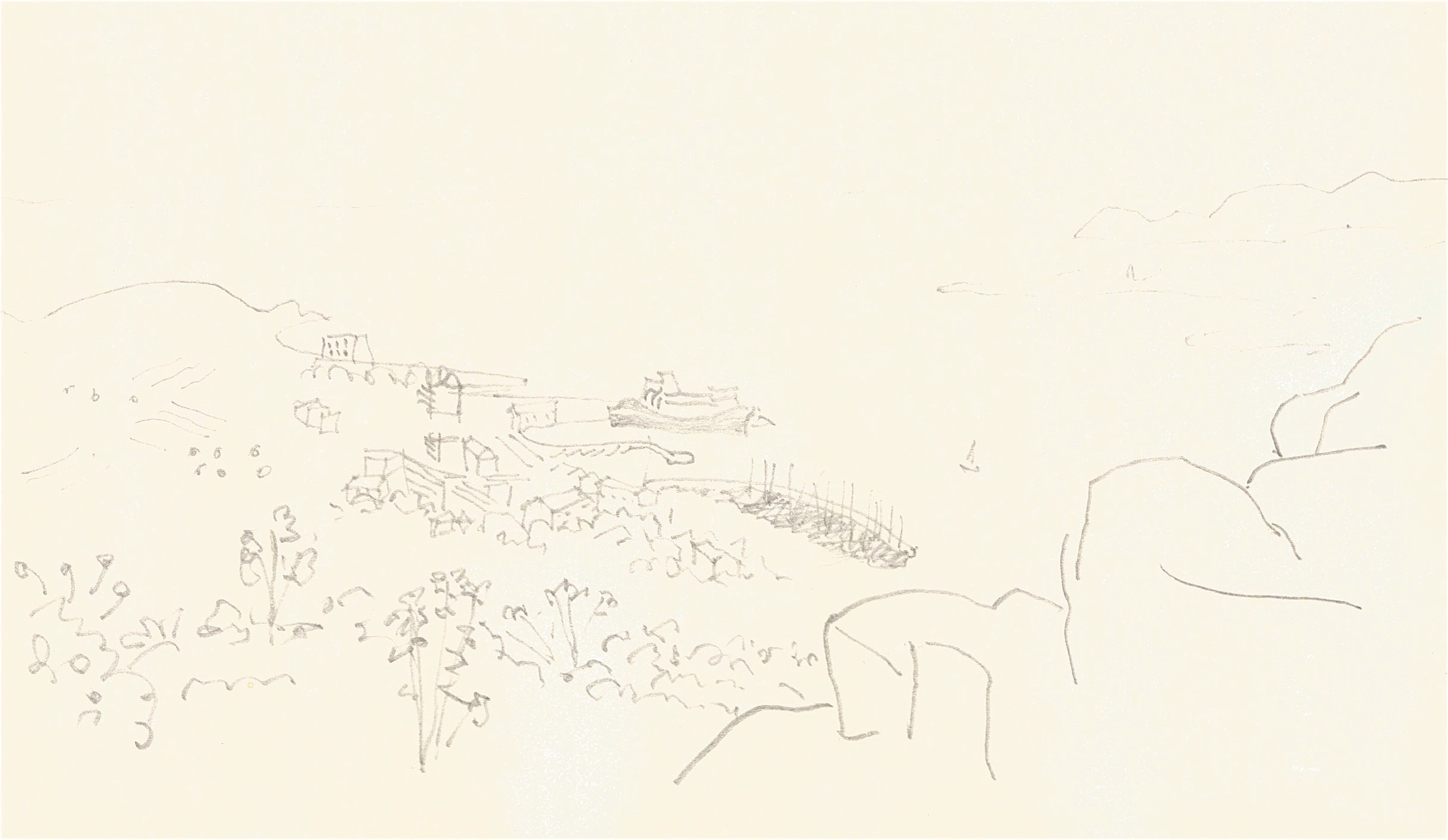
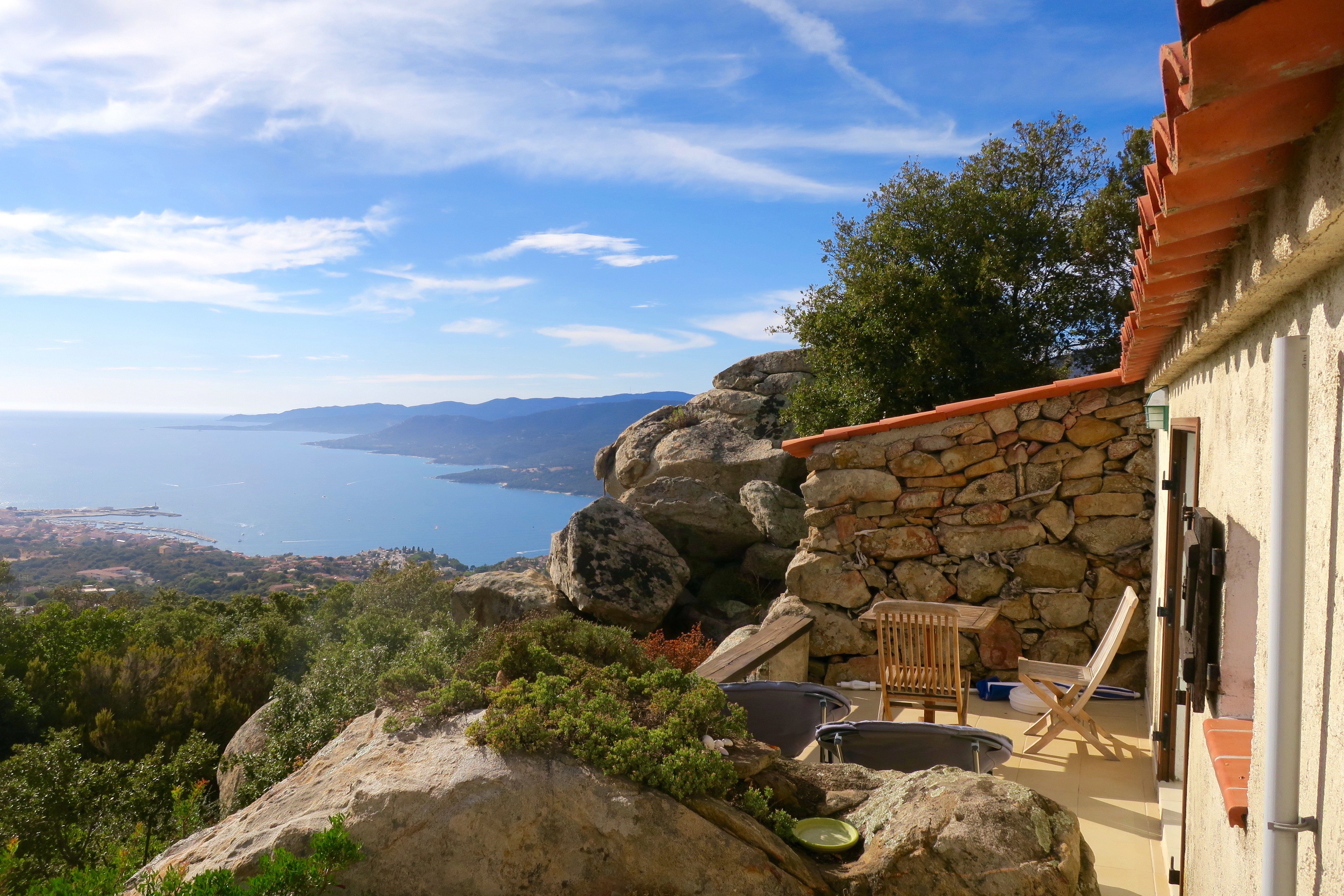
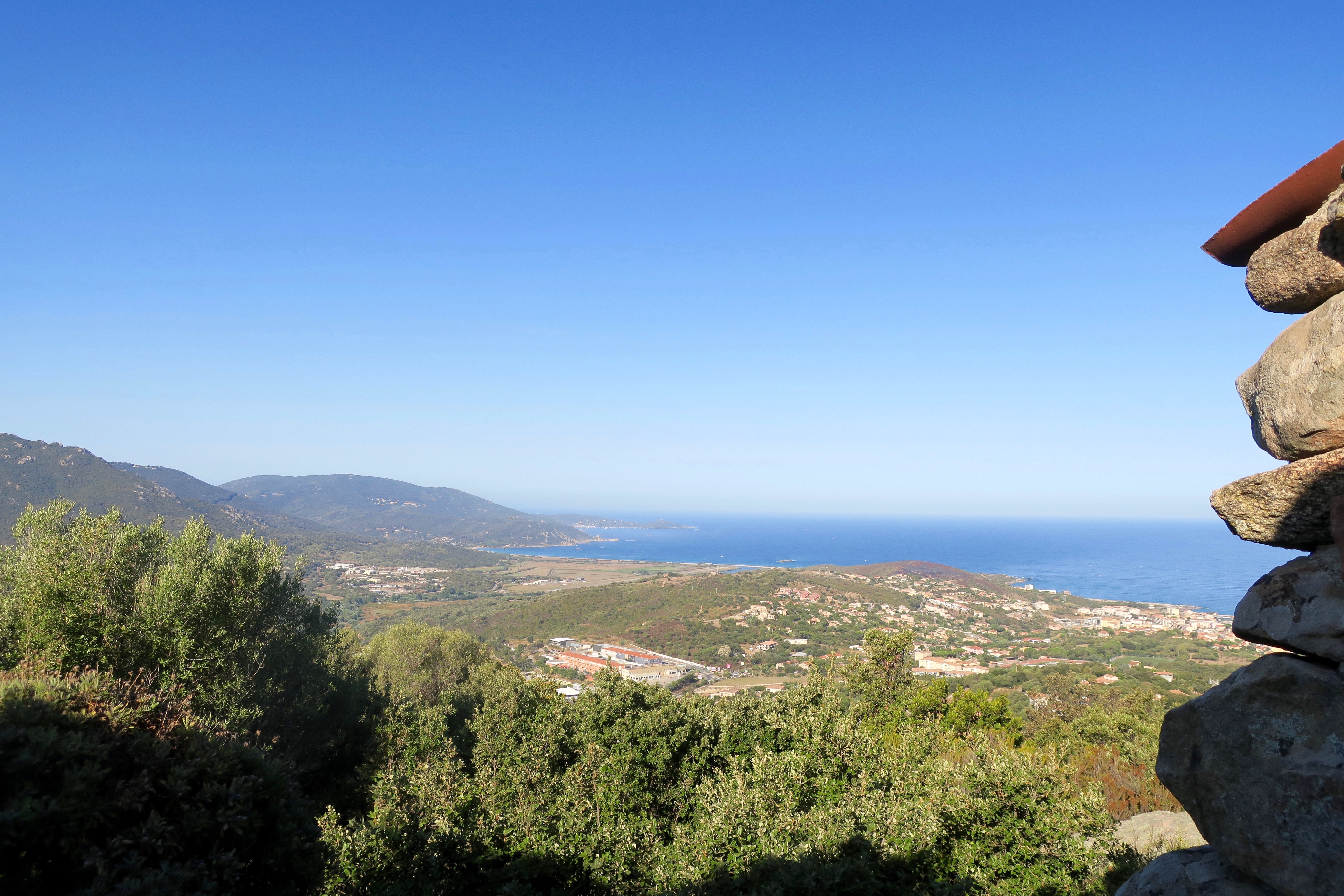



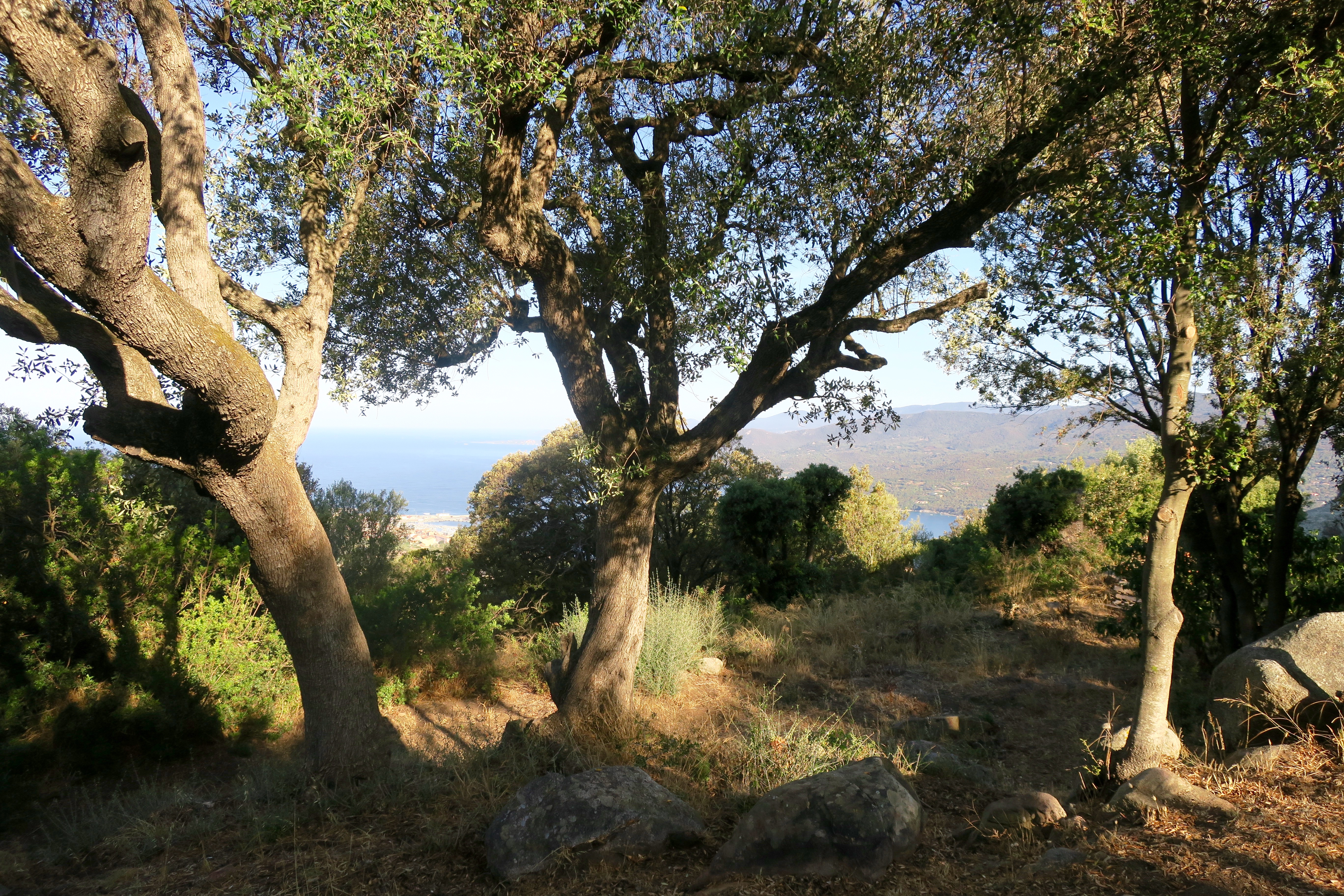
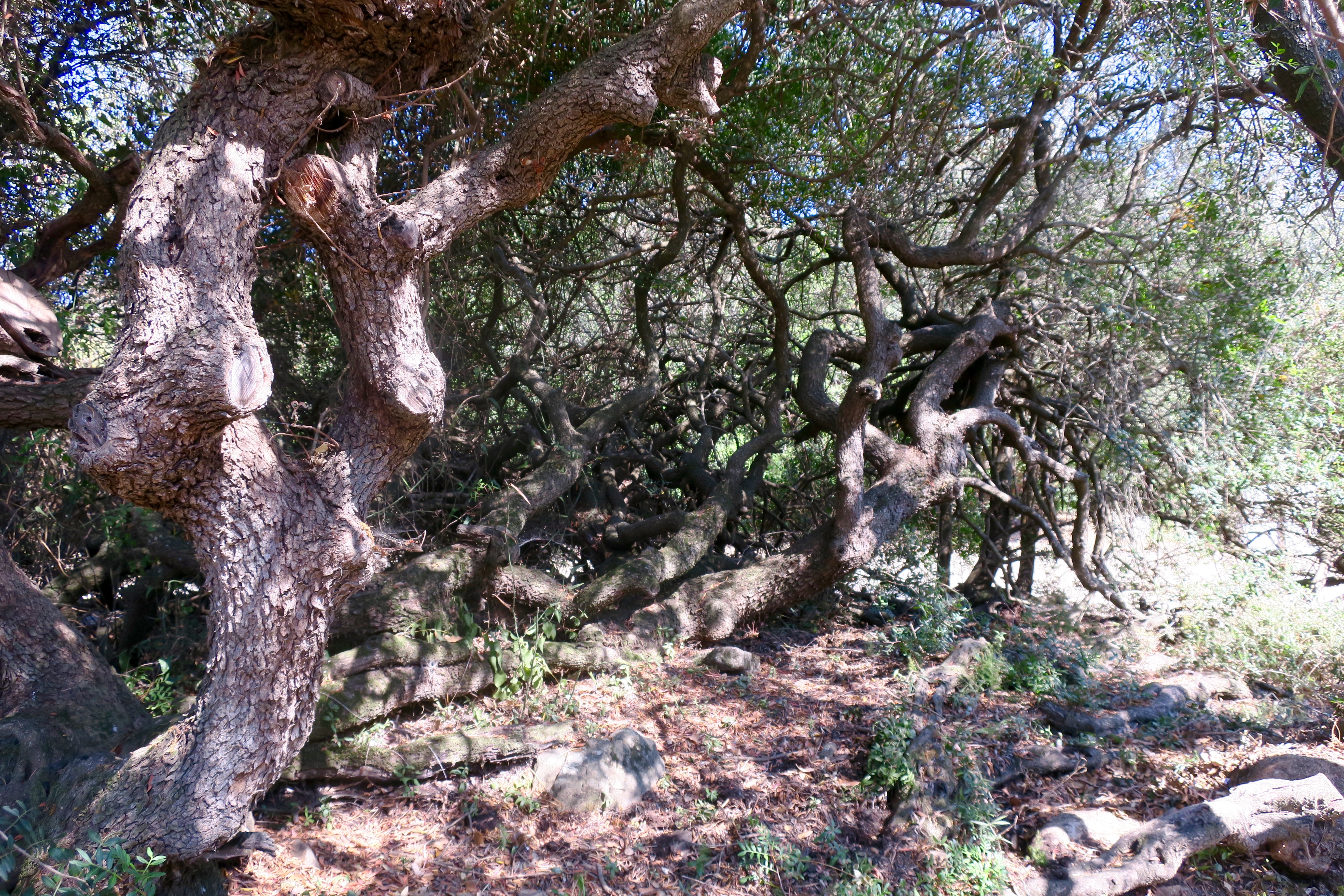

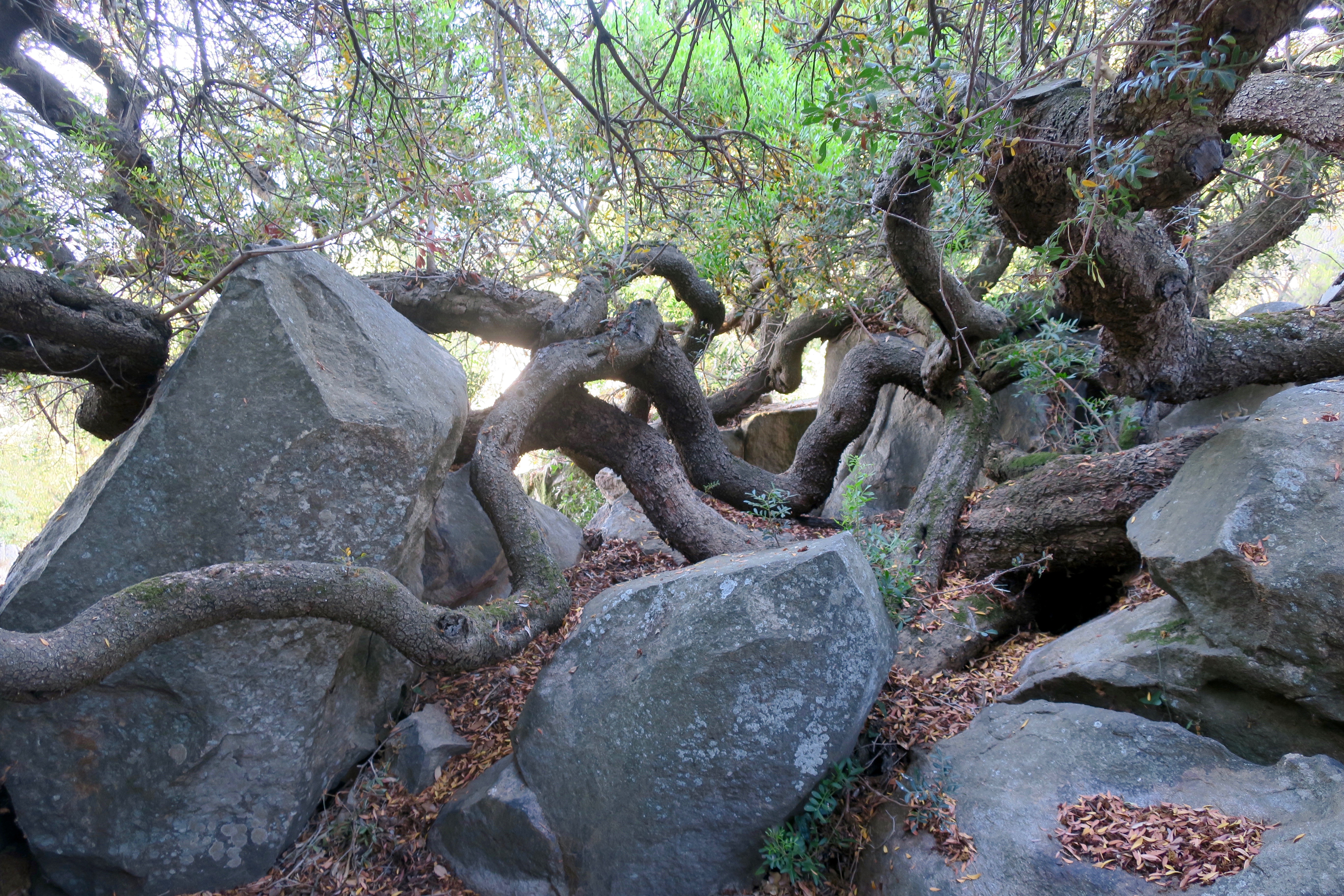



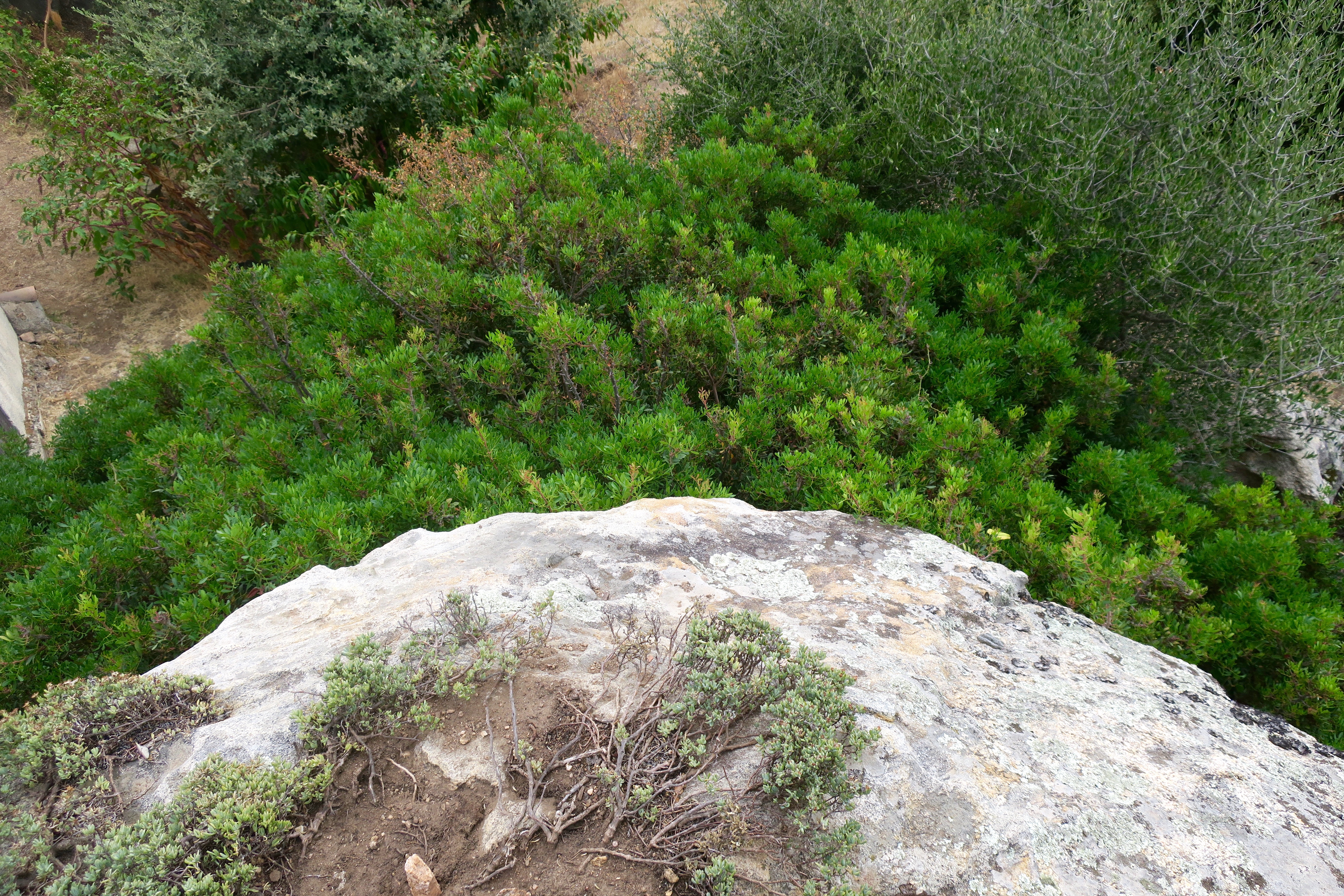

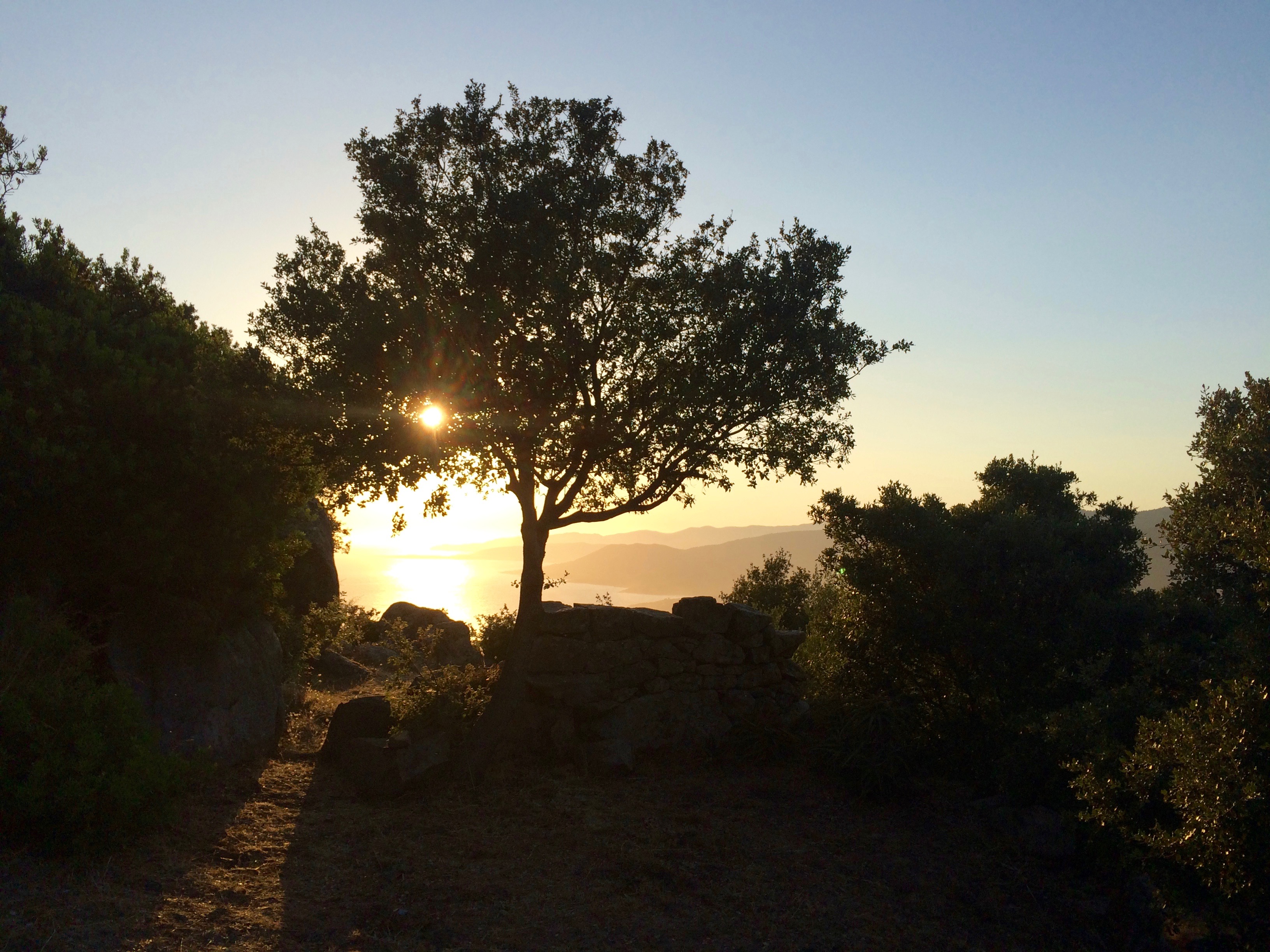
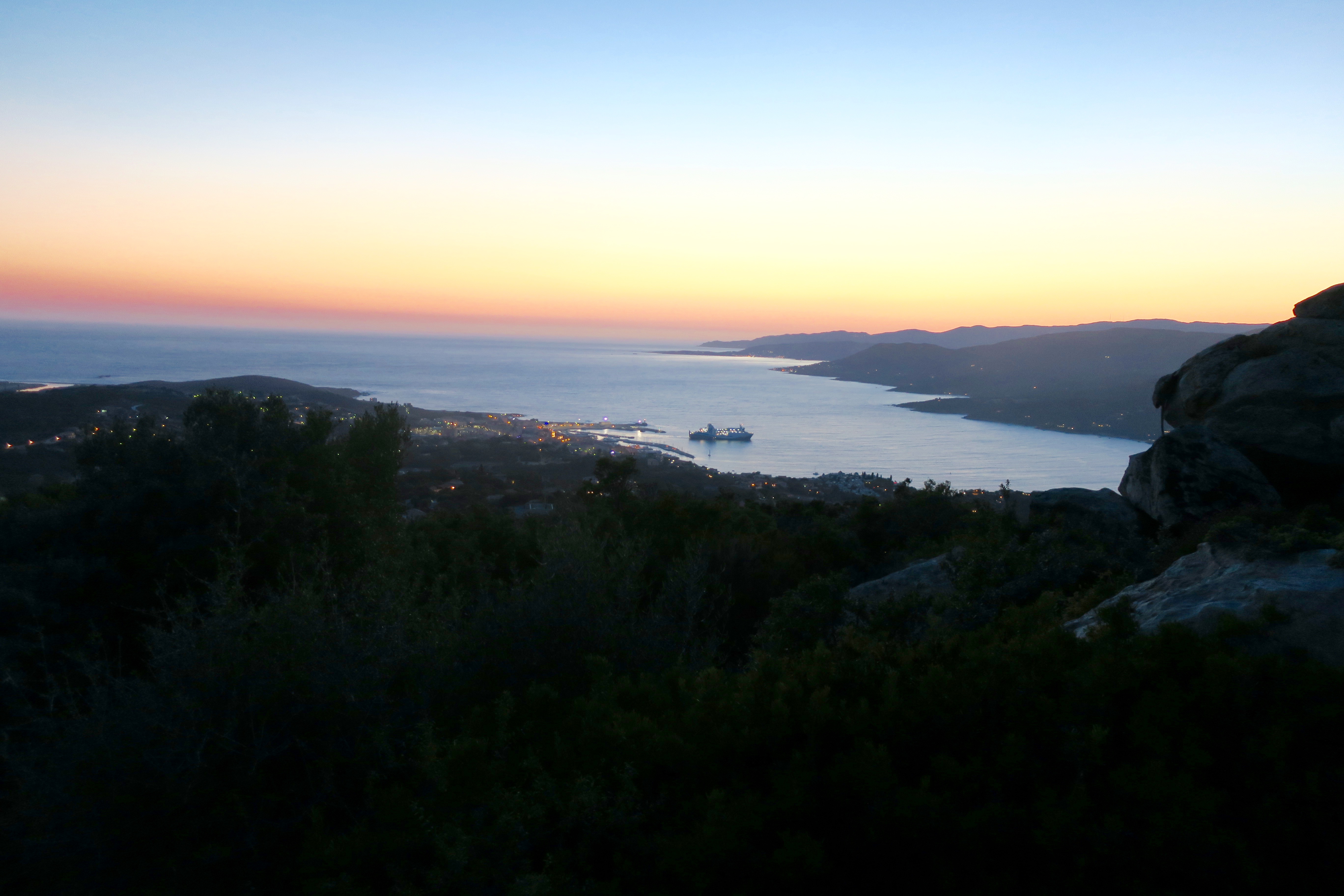


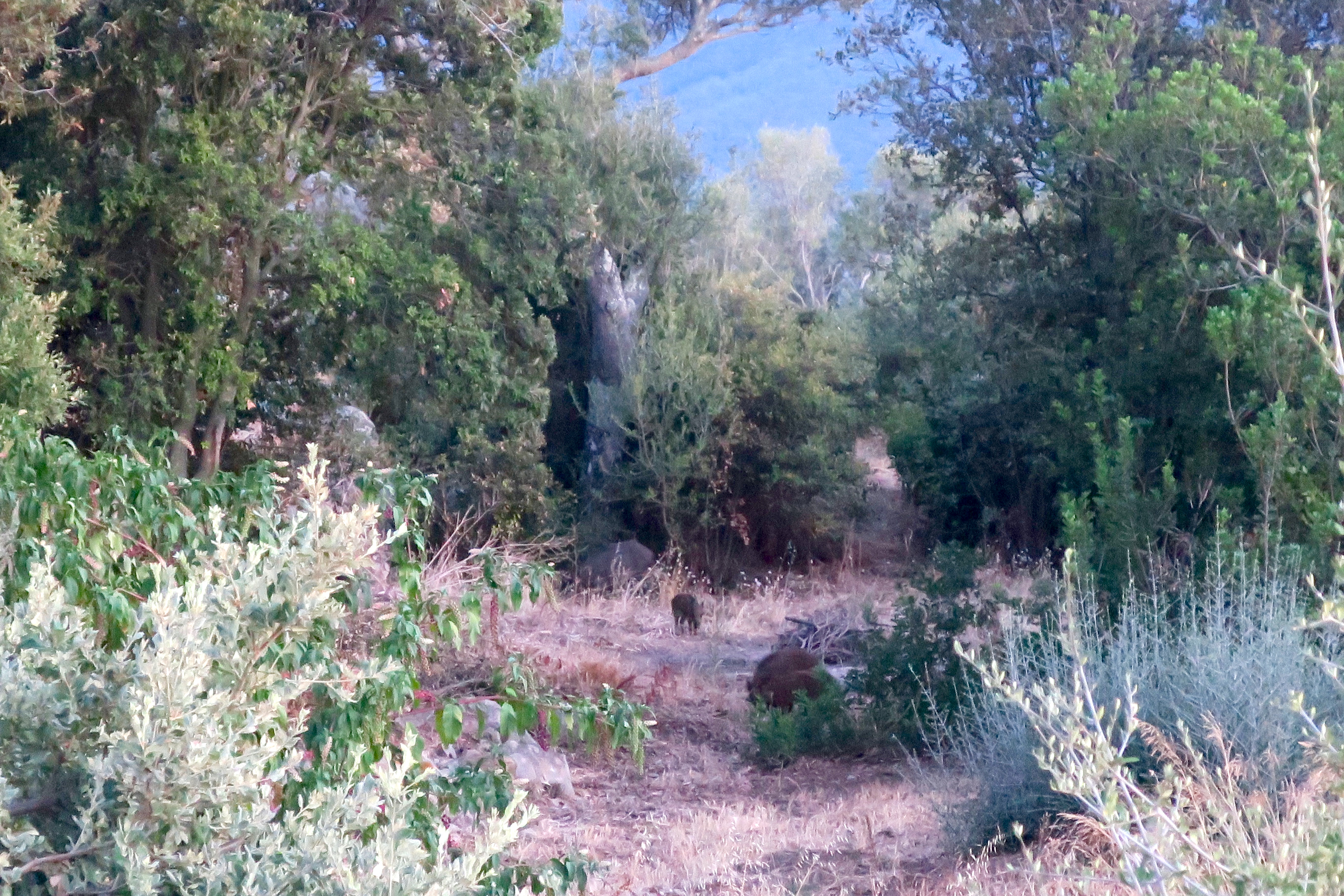

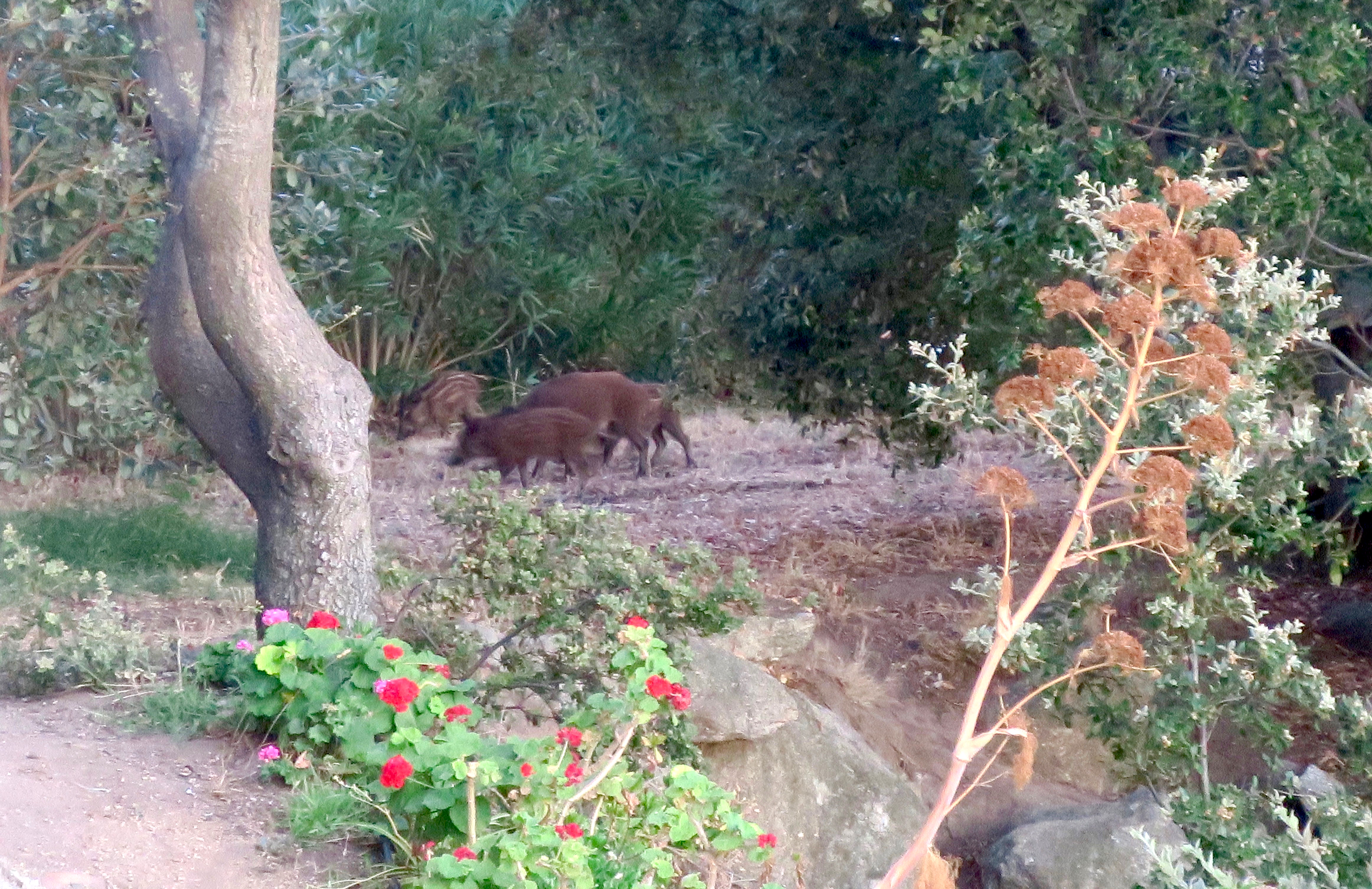


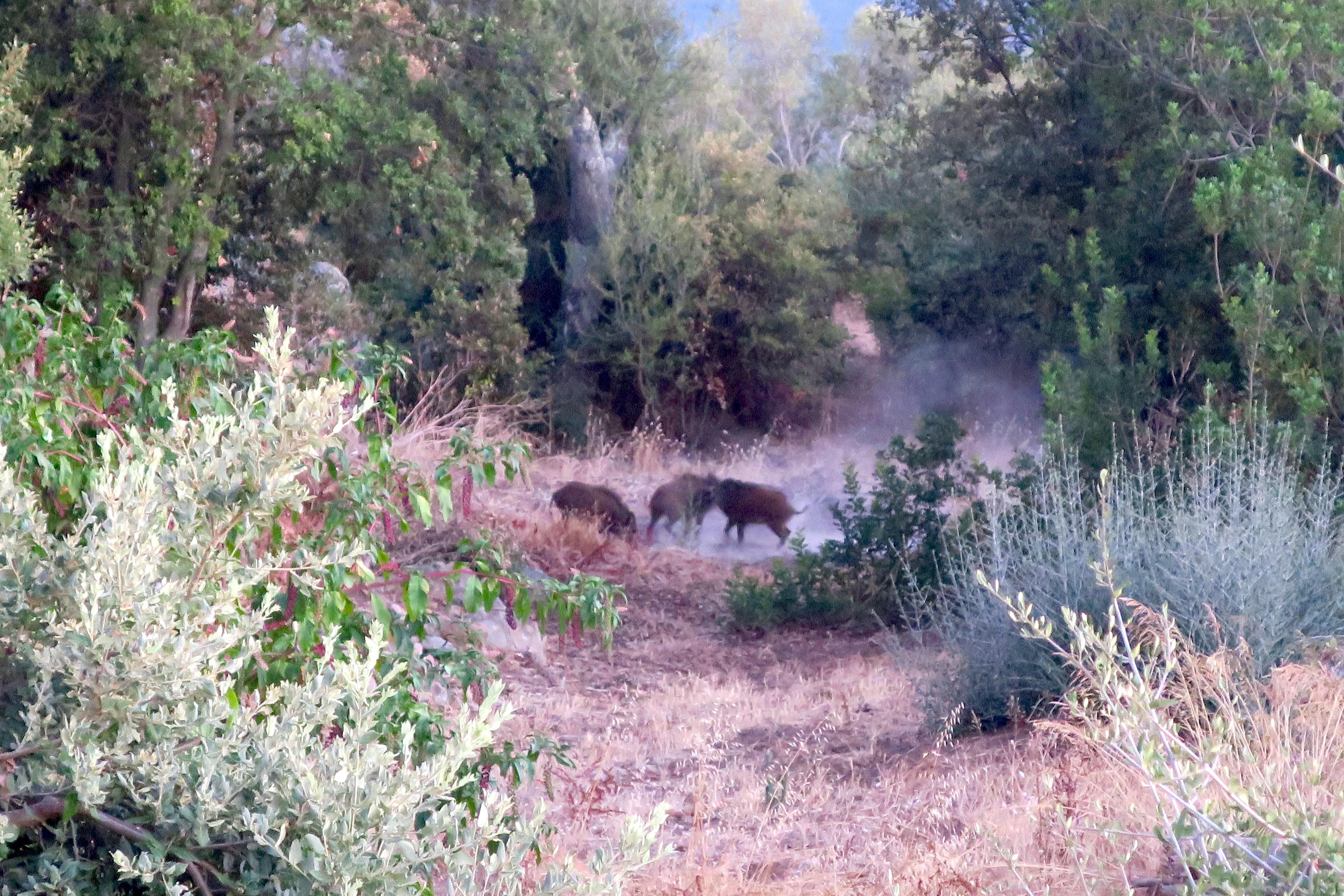

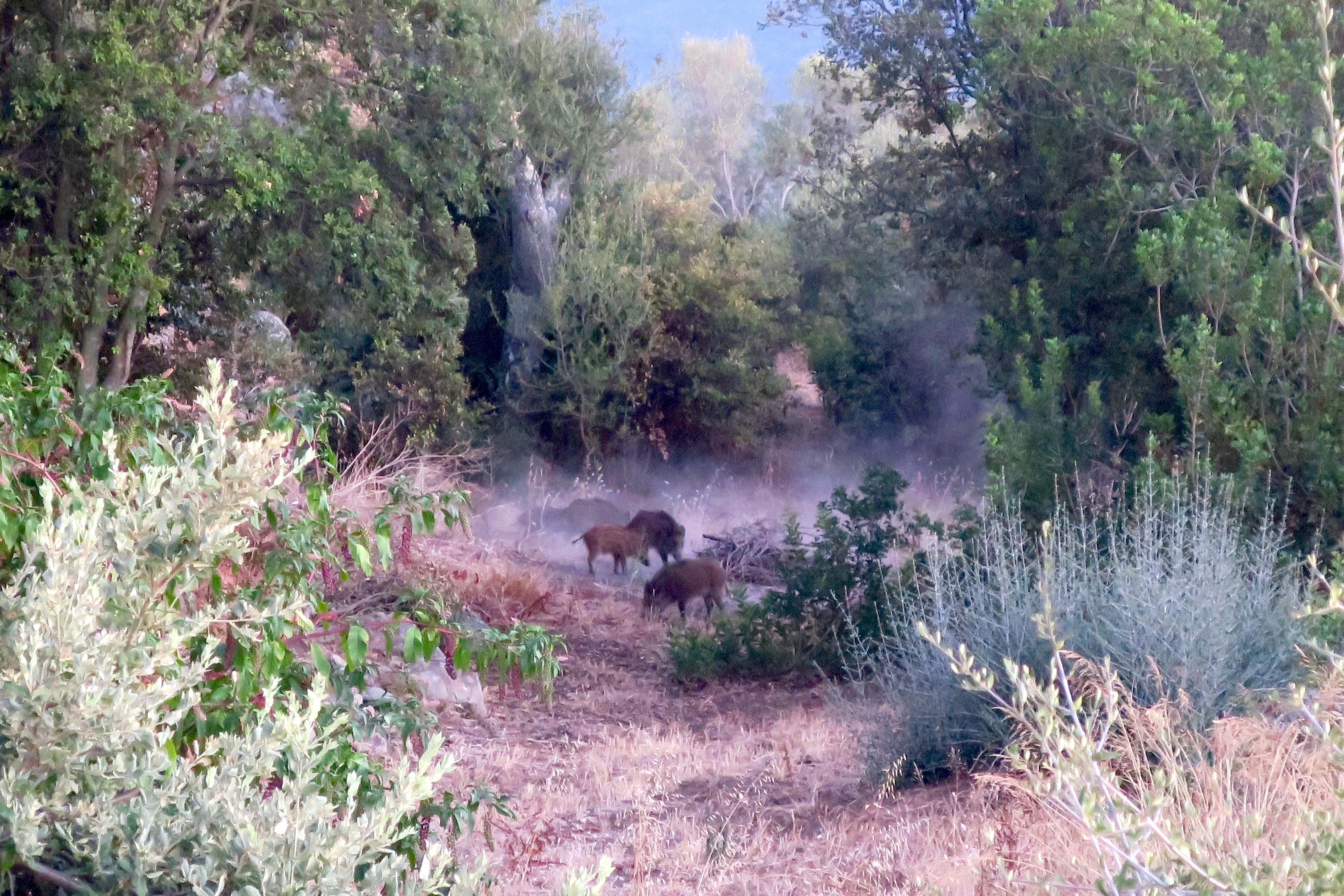




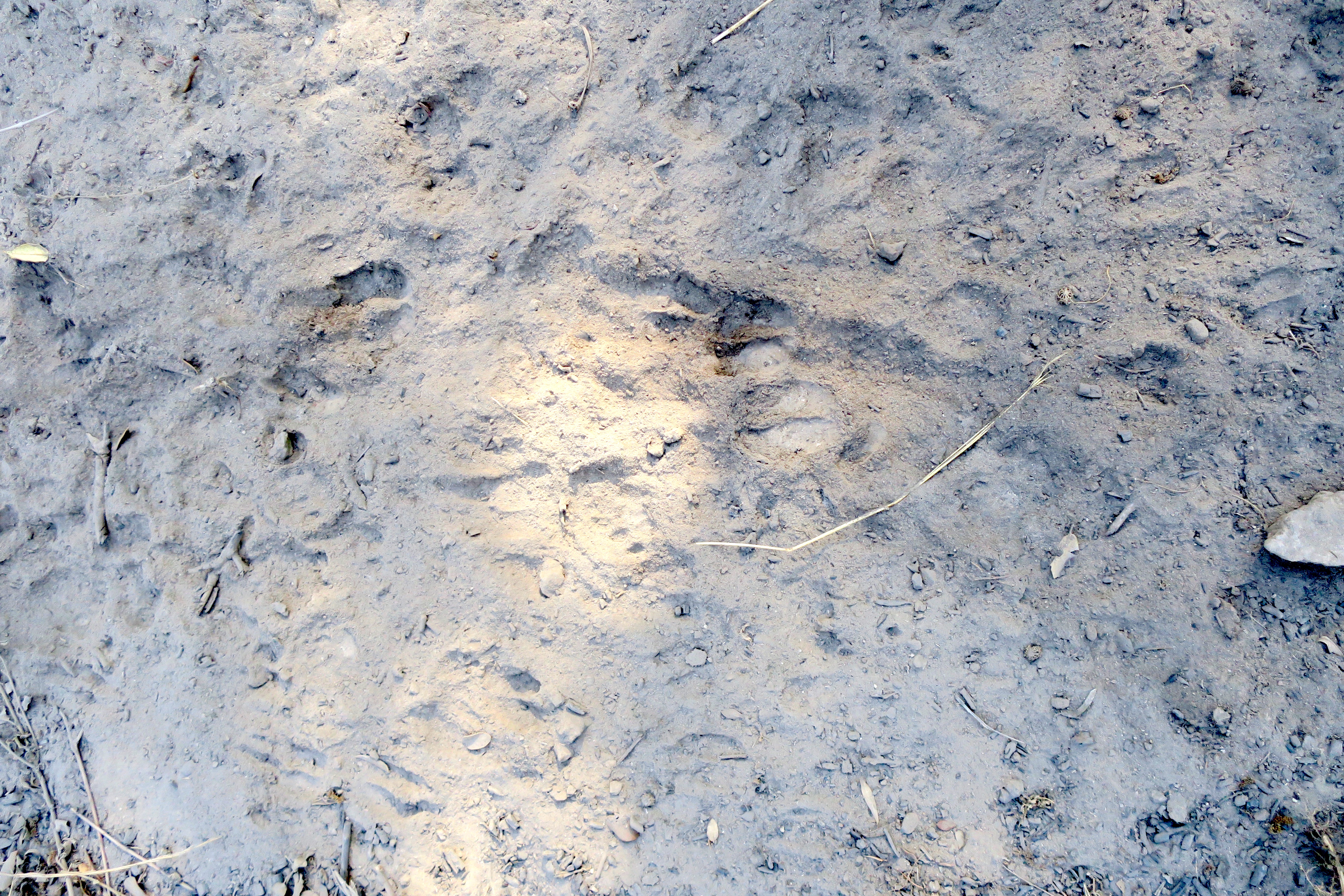
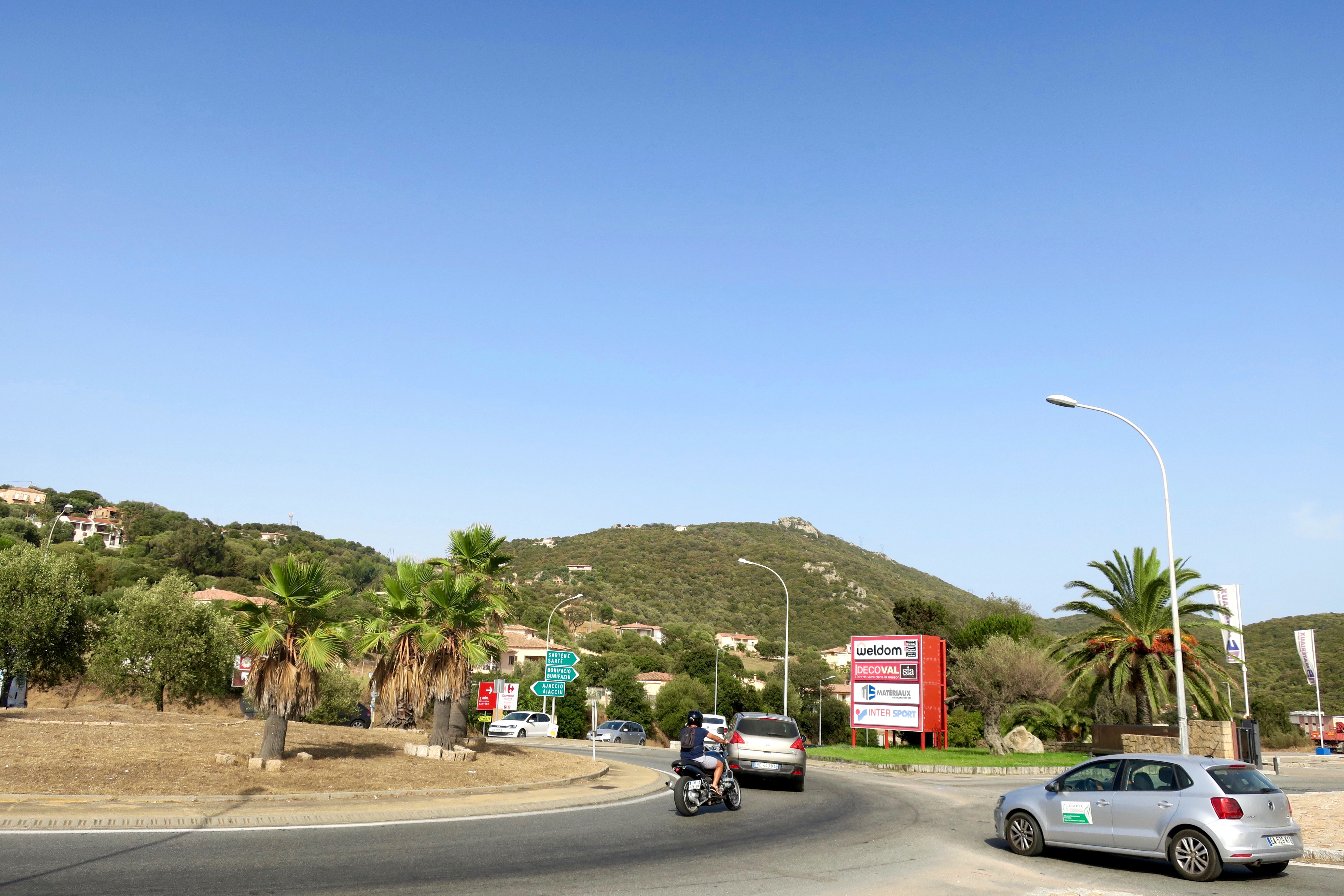
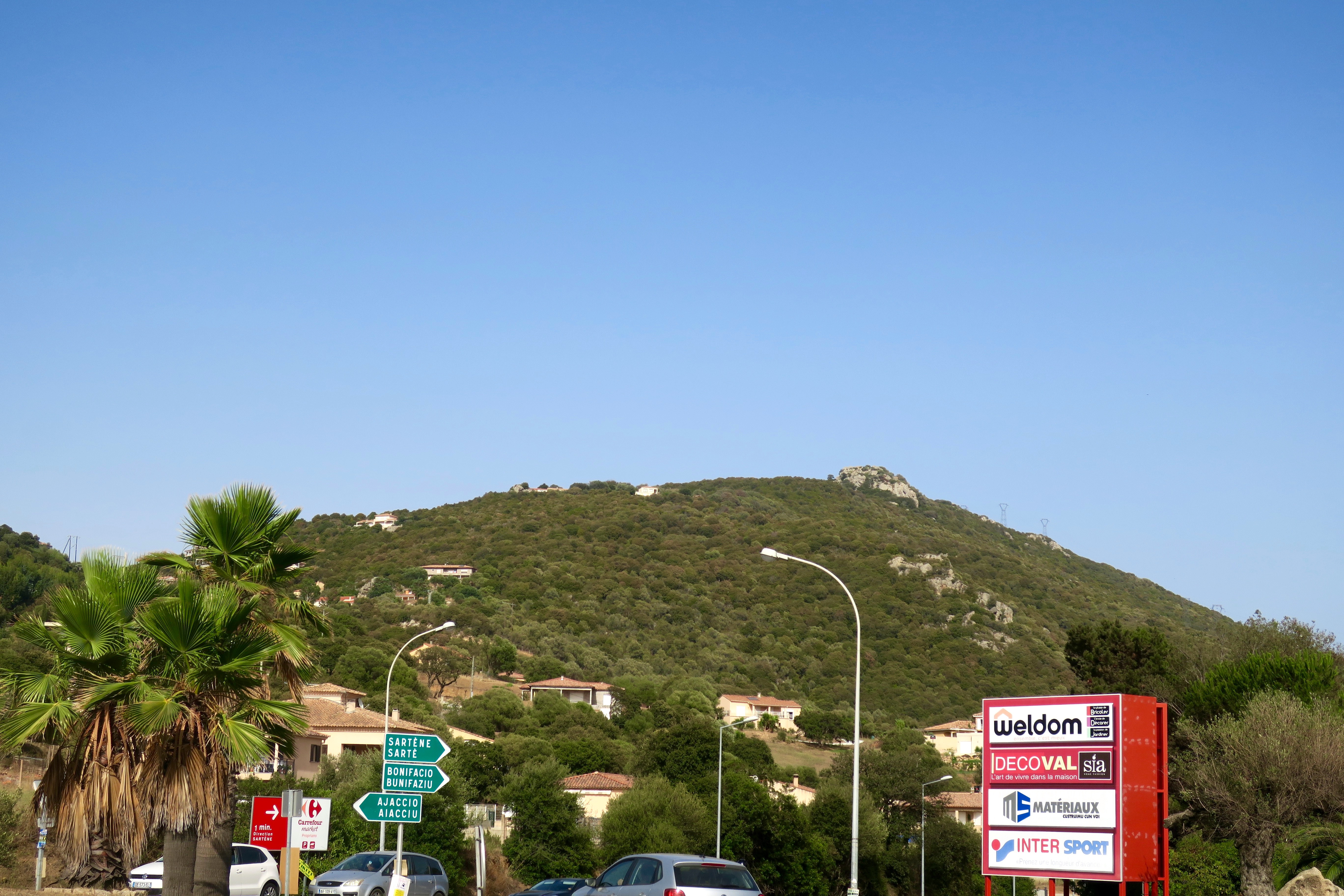


Bonjour Chris,
A wonderful view of La Corse.
It looks magical and primeval and quite exotic with the moderne houses on the green hillsides.
I love the sanglier dust dance in the fire ash,
so primitive and gritty.
Were you playing a pan pipe?
Monsieur C
I was! How did you guess?
A Rothko sunset. Nice.
The wild pigs interest me, of course. You must have been quite a distance away, as they’re normally very shy. We don’t have them here (yet) but I understand they’re terribly destructive.
Beautiful photographic essay, as always.
Thanks Bill. Those pigs were a great surprise. They’d appear most nights at sunset, coming up from the woods below to root around the garden, but they only seemed interested in turning over the uncultivated ground. Very polite pigs. I’d guess there were about 30 of them and they were maybe 20 yards away, not far I suppose, but it was dark and we were just watching shadows. I set my camera on automatic and pointed it into the gloom and didn’t know if I’d caught anything until I checked on the computer when we got back home. I read later that they carry ticks so not so cute as your pigs.